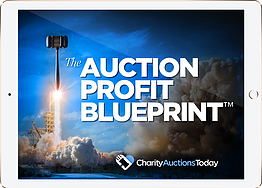DOWNLOAD The Auction Profit Blueprint
The 4 tools BIG organizations use every time to skyrocket auction profits!
The Step-By-Step Guide to stop leaving thousands on the table.
Explore our guide to crafting your own nonprofit marketing plan. CharityAuctionsToday can help you take your nonprofit marketing to the next level.

In the world of nonprofits, marketing is a crucial tool. It’s the vehicle that drives your mission to the masses.
Yet, it’s often a challenge for many nonprofits. Limited resources, tight budgets, and a lack of expertise can make it tough.
But with the right strategies, it’s possible to overcome these hurdles.
This is where a well-crafted nonprofit marketing plan comes into play. It’s your roadmap to success, guiding your organization towards its goals.
In this comprehensive guide, we’ll delve into the world of nonprofit marketing plan strategies.
We’ll explore the unique challenges faced by nonprofits. We’ll discuss why a tailored marketing plan is crucial for your success.
We’ll walk you through a step-by-step approach to crafting your nonprofit marketing plan. From aligning with your mission and vision to monitoring and adjusting your strategies, we’ve got you covered.
We’ll also provide a downloadable nonprofit marketing plan template. This will serve as a practical tool to help you implement what you learn.
We’ll delve into effective nonprofit marketing strategies. We’ll discuss content marketing, social media engagement, email marketing, and more.
We’ll explore how to leverage digital marketing tools. We’ll discuss SEO for nonprofits and utilizing free and low-cost marketing tools.
Finally, we’ll discuss how to measure the success of your nonprofit marketing plan. We’ll provide key metrics to track and analyze, and how to adjust your plan based on performance data.
Whether you’re a nonprofit marketing professional, a leader, a volunteer, or just someone interested in nonprofit marketing, this guide is for you.
Nonprofit marketing is a unique field. It’s about more than just selling products or services.
It’s about promoting a cause, a mission. It’s about inspiring people to take action, to make a difference.
Nonprofit marketing involves a range of activities. These include fundraising, volunteer recruitment, advocacy, and community engagement.
It’s about telling your nonprofit’s story. It’s about connecting with your audience on a deep, emotional level.
To do this effectively, you need to understand your audience. You need to know what motivates them, what they care about.
You need to communicate in a way that resonates with them. You need to show them how they can make a difference.
This is where a well-crafted marketing plan comes in. It provides a clear roadmap for your marketing efforts.
Nonprofit marketing comes with its own set of challenges. One of the biggest is limited resources.
Nonprofits often operate on tight budgets. This means they have to do more with less.
Another challenge is the need to appeal to a diverse audience. Nonprofits need to engage donors, volunteers, beneficiaries, and the wider community.
Each of these groups has different needs and interests. Crafting a message that resonates with all of them can be tough.
A tailored marketing plan is crucial for nonprofit success. It provides a clear direction for your marketing efforts.
It helps you align your marketing activities with your mission and goals. It ensures that all your efforts are working towards the same end.
A marketing plan also helps you allocate your resources effectively. It helps you decide where to invest your time and money for the greatest impact.
Finally, a marketing plan allows you to measure your success. It provides clear objectives and metrics that you can track and adjust as needed.
Creating a nonprofit marketing plan may seem daunting. But it doesn’t have to be.
By breaking it down into manageable steps, you can create a plan that’s tailored to your organization’s needs.
This step-by-step approach will guide you through the process. It will help you create a plan that’s strategic, focused, and effective.
The first step in creating a marketing plan is aligning it with your mission and vision. These should be the foundation of all your marketing efforts.
Your mission is why you exist. It’s the change you want to make in the world.
Your vision is what you’re striving for. It’s the world as you want it to be.
Your marketing plan should reflect these. It should help you communicate your mission and vision to your audience.
It should inspire them to join you in your cause.
The next step is setting your marketing objectives. These should be SMART: Specific, Measurable, Achievable, Relevant, and Time-bound.
Specific objectives are clear and detailed. They leave no room for ambiguity.
Measurable objectives can be tracked. You can measure your progress towards them.
Achievable objectives are realistic. They’re challenging, but within your reach.
Relevant objectives align with your mission and vision. They help you move closer to your goals.
Time-bound objectives have a deadline. This creates a sense of urgency and motivates action.
A SWOT analysis is a useful tool for planning your marketing strategy. It stands for Strengths, Weaknesses, Opportunities, and Threats.
Strengths are what your organization does well. They’re your assets, your unique selling points.
Weaknesses are areas where you could improve. They’re the things that hold you back.
Opportunities are external factors that you can take advantage of. They’re trends, changes, or events that could benefit your organization.
Threats are external factors that could harm your organization. They’re risks, challenges, or obstacles that you need to be aware of.
By conducting a SWOT analysis, you can create a strategy that leverages your strengths, addresses your weaknesses, capitalizes on opportunities, and mitigates threats.
Your stakeholders are a valuable source of insights. They include your donors, volunteers, beneficiaries, board, and community members.
Engaging them in your planning process can provide valuable insights. They can help you understand your audience’s needs, interests, and motivations.
They can also provide feedback on your current marketing efforts. They can tell you what’s working, what’s not, and why.
Incorporating these insights into your plan can make it more effective. It can help you create a plan that truly resonates with your audience.
Your target audience is not a monolith. It’s made up of different groups, each with their own needs and interests.
Segmenting your audience allows you to tailor your messaging to each group. It allows you to speak directly to their needs and interests.
This can make your marketing more effective. It can help you connect with your audience on a deeper level.
Your brand voice is how you communicate with your audience. It’s the tone, style, and language you use.
Your messaging guidelines are the key messages you want to convey. They’re the ideas, themes, and values you want to communicate.
Developing clear brand voice and messaging guidelines can ensure consistency across your marketing efforts. It can help you create a strong, recognizable brand.
Not all marketing channels are created equal. Some may be more effective for your organization than others.
Choosing the right channels depends on your audience. You need to understand where they spend their time and how they prefer to receive information.
You also need to consider your resources. Some channels may require more time, money, or expertise than others.
Content marketing is a powerful tool for nonprofits. It allows you to tell your story, educate your audience, and inspire action.
Creating a content marketing strategy involves planning, creating, distributing, and measuring content. It’s about providing valuable, relevant content that engages your audience and drives action.
Budget is a key consideration in any marketing plan. You need to allocate your resources effectively to maximize your impact.
This involves prioritizing your chosen marketing channels. If you’ve decided social media is essential but you don’t have those skills, you’ll need to outsource that piece of your strategy. Paid ads on Google or other channels require ad spend.
Measure your staff salaries, software costs, outsourcing costs, etc. against your revenue and decide your budget.
A nonprofit marketing plan template can be a valuable tool. It provides a structured format for your plan.
This can make the planning process easier and more efficient. It can help you ensure that you’ve covered all the necessary elements.
A good template should be flexible. It should allow you to adapt it to your organization’s unique needs and circumstances.
It should also be comprehensive. It should cover all aspects of your marketing plan, from your mission and objectives to your strategies and tactics.
Finally, it should be user-friendly. It should be easy to understand and use, even for those with little marketing experience.

by Campaign Creators, Unsplash
To help you get started, we’ve created a downloadable nonprofit marketing plan template. This template is designed to guide you through the planning process.
It includes sections for each step of the process, from defining your mission and objectives to choosing your marketing channels and measuring your success.
Simply download the template, fill it in, and you’ll have a comprehensive marketing plan ready to go.
Effective marketing strategies are crucial for nonprofits. They help to raise awareness, engage supporters, and drive action.
There are many strategies that nonprofits can use. The best ones will depend on your organization’s goals, audience, and resources.
Here are some strategies that have proven effective for many nonprofits:
Content marketing is a powerful tool for nonprofits. It allows you to share your organization’s story and mission.
Storytelling is a key part of content marketing. It helps to make your organization’s work tangible and relatable.
You can use a variety of content types, from blog posts and articles to videos and infographics. The key is to create content that is engaging, informative, and inspiring.
Remember to always tie your content back to your mission and objectives. This will help to ensure that your content is always relevant and impactful.
Social media is a powerful platform for nonprofits. It allows you to reach a large audience and engage with them directly.
Community building is a key part of social media marketing. It involves creating a space where your supporters can connect, engage, and share.
You can use social media to share updates, promote events, and engage with your supporters. Remember to always respond to comments and messages in a timely and thoughtful manner.
Social media is also a great platform for storytelling. You can use it to share stories about your work, your impact, and your supporters.
Email marketing is a highly effective strategy for nonprofits. It allows you to communicate directly with your supporters.
Personalization is key in email marketing. It involves tailoring your messages to the individual recipient.
You can use email marketing to share updates, promote events, and ask for support. Remember to always provide value in your emails, whether it’s in the form of information, inspiration, or opportunities to get involved.
Segmenting your email list can help you to personalize your communications. This involves dividing your list into groups based on factors like interests, engagement level, and donation history.
Partnerships can be a powerful strategy for nonprofits. They allow you to leverage the resources and reach of other organizations.
Co-marketing is a type of partnership where two or more organizations promote each other. This can help to expand your reach and increase your impact.
You can partner with other nonprofits, businesses, or influencers. The key is to choose partners who share your values and have a similar audience.
Remember to always be clear and transparent about the terms of the partnership. This will help to ensure that it is beneficial for all parties involved.
Digital marketing tools can greatly enhance a nonprofit’s marketing efforts. They can help to streamline processes, increase reach, and measure success.
There are many digital marketing tools available. Some are free or low-cost, making them accessible even for nonprofits with limited budgets.
These tools can help with various aspects of marketing, including:
Search engine optimization, or SEO, is a crucial aspect of digital marketing. It involves optimizing your online content to rank higher in search engine results.
A higher ranking can lead to increased visibility and traffic. In short, it helps people find you and your services. This can help to raise awareness of your nonprofit and its mission.

by Merakist, Unsplash
There are many aspects to SEO, including keyword research, on-page optimization, and link building. It can be complex, but there are many tools and resources available to help.
Remember, SEO is a long-term strategy. It can take time to see results, but the benefits can be significant.
There are many free and low-cost marketing tools available for nonprofits. These can help to make your marketing efforts more efficient and effective.
For example, social media management tools can help you to schedule posts, monitor engagement, and analyze performance. Email marketing tools can help you to manage your list, create professional-looking emails, and track open rates and click-through rates.
Content creation tools can help you to create engaging and visually appealing content. This can include blog posts, social media posts, infographics, and videos.
Finally, analytics tools can help you to measure the success of your marketing efforts. They can provide insights into your audience, engagement, and conversions.
Remember, the best tools will depend on your needs and resources. It’s worth taking the time to explore different options and find the best fit for your nonprofit.
Measuring the success of your nonprofit marketing plan is crucial. It helps you understand if your efforts are paying off.
It also provides insights into what’s working and what’s not. This can help you make informed decisions about where to focus your resources.
There are many metrics you can track to measure success. These can include website traffic, social media engagement, email open rates, and donation amounts.
It’s important to track these metrics over time. This can help you identify trends and patterns.
Remember, the goal is not just to collect data, but to use it to inform your marketing strategies.
There are many metrics you can track to measure the success of your nonprofit marketing plan. These can vary depending on your goals and strategies.
For example, if your goal is to increase awareness, you might track metrics like website traffic, social media followers, and media mentions.
If your goal is to increase donations, you might track metrics like donation amounts, number of donors, and donor retention rates.
Performance data can provide valuable insights into your marketing efforts. It can help you understand what’s working and what’s not.
For example, if your data shows that your social media posts are not getting much engagement, you might need to adjust your strategy. This could involve posting at different times, using different types of content, or targeting different audiences.
Remember, the goal is not just to collect data, but to use it to inform and improve your marketing strategies.
Having said that, give your strategies time to take effect and for you to gather enough data to base decisions on. Keep in mind that different channels need different timelines: SEO strategies should be given at least three to four months whereas social strategies can be evaluated after one or two.
Creating a nonprofit marketing plan can be a complex task. It involves many steps and considerations.
To help you stay organized and ensure nothing is overlooked, we’ve created a checklist. This can guide you through the process of creating your nonprofit marketing plan.
Here are some key items to include in your checklist:
Remember, this checklist is a guide. It’s important to tailor it to your nonprofit’s unique needs and goals.
Creating a marketing plan is not a one-time task. It’s an ongoing process that requires regular review and adjustment. This checklist can help you stay on track and ensure your marketing efforts are effective.
In conclusion, creating an effective nonprofit marketing plan is a strategic process. It requires a deep understanding of your organization’s mission, audience, and resources.
The strategies and steps outlined in this guide are designed to help you navigate this process. They provide a roadmap for creating a marketing plan that aligns with your nonprofit’s goals and maximizes your resources.
Remember, the most effective marketing plans are flexible. They adapt to changes in the environment, audience behavior, and organizational goals. Regular review and adjustment of your plan is key to its success.
In the ever-evolving world of nonprofit marketing, staying informed and adaptable is crucial. We hope this guide serves as a valuable resource in your journey towards more effective and impactful nonprofit marketing.
DOWNLOAD The Auction Profit Blueprint
The 4 tools BIG organizations use every time to skyrocket auction profits!
The Step-By-Step Guide to stop leaving thousands on the table.

